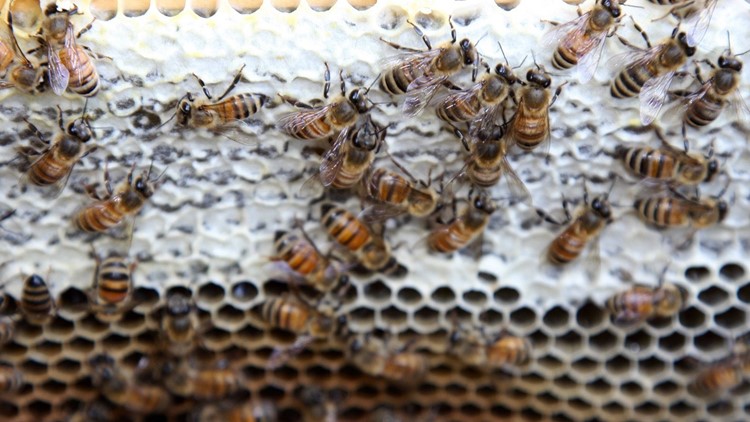PENNSYLVANIA, USA — Over recent years, there has been a buzz about a decline in the bee population nationwide, but a recent study conducted by Pennsylvania State University showed an abundance of bees and multiple new bee species in Pennsylvania.
The university recruited 26 community participants who were mostly Master Gardeners. They received extensive training from Penn State experts to collect bees throughout Pa. The goal of the study was to document bee biodiversity and its abundance.
Between August 2021-December 2022, the participants collected 9,062 bees including 235 bee species through the use of blue vane traps, bowl traps and netting. The bees found were identified to species, stored in museum collections and the data was added to public databases.
New species of bees that were discovered in the state include andrena duplicata (mining bee), nomada banksiav (cuckoo bee), hylaeus punctatus and five more listed in the research findings.
With the amount of bees found, the study resulted in 662 county records and seven state records.
“More than 80% of flowering plants rely on pollinators like bees to reproduce,” Pennsylvania Agriculture Secretary Russell Redding said in a Penn State press release. “Apples, peaches, berries, pumpkins, grapes and many other high-value Pennsylvania crops depend on bees, as does our $4.1 billion nursery and landscaping industry. In so many of our communities, our jobs and livelihoods revolve around producing foods that rely on pollination. The data in this report illustrate the value of citizen science in making sure we can protect pollinators and produce food in the future."
While the participants were collecting data, researchers compared the data to users on the iNaturalist app, a photo-based app documenting bee biodiversity.
A study conducted by the Annals of the Entomological Society of America found that Penn State's selected volunteers were more than twice as effective at documenting bee biodiversity, and documented over twice as much biodiversity than users on iNaturalist.
“This study demonstrates the value of involving highly trained community scientists in collections-based research,” said Margarita López-Uribe, the Lorenzo Langstroth Early Career Associate Professor of Entomology and extension specialist of pollinator health at Penn State. “It also revealed some of the limitations of photography-based monitoring, which is still a useful tool for scientists, but doesn’t capture the full picture of biodiversity.”
Along with discovering more about bees throughout the commonwealth, the research also established the importance of partnerships with local communities.
The success of the collaboration between the community and the university hopes to serve as a model for other programs to develop more volunteer-based opportunities and better understand the state's biodiversity.



